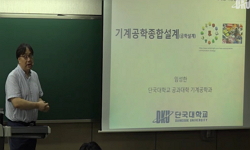This study focuses on geminate formation through three different types of assimilation in Pulaar. The geminate formation is motivated in order to avoid the unallowable medial consonant clusters, which are created by morpheme concatenation. Progressive...
http://chineseinput.net/에서 pinyin(병음)방식으로 중국어를 변환할 수 있습니다.
변환된 중국어를 복사하여 사용하시면 됩니다.
- 中文 을 입력하시려면 zhongwen을 입력하시고 space를누르시면됩니다.
- 北京 을 입력하시려면 beijing을 입력하시고 space를 누르시면 됩니다.
부가정보
다국어 초록 (Multilingual Abstract)
This study focuses on geminate formation through three different types of assimilation in Pulaar. The geminate formation is motivated in order to avoid the unallowable medial consonant clusters, which are created by morpheme concatenation. Progressive assimilation is explained by invoking the preservation of the marked feature [-ant] over the less marked [+ant] of the coronal place feature. Regressive assimilation is accounted for by adopting the asymmetry between onset and coda position with respect to the realization of features. The bi-directional reciprocal assimilation is analyzed by using the constraints employed for two uni-directional assimilation types in the language. These three types of assimilation in Pulaar, which must be explained by different rules and their ordering in rule-based theoretical framework, can be explained by a unified constraint ranking.
참고문헌 (Reference)
1 McCarthy, J. J., "University of Massachusetts Occasional Papers in Linguistics 18" GLSA, University of Massachusetts 249-348, 1995
2 Cho, Y. Y., "The Special Status of Coronals: Internal and External Evidence" Academic Press, Inc 159-177, 1991
3 Steriade, D., "The Role of Speech Perception in Phonology" Academic Press 219-250, 2001
4 Steriade, D., "The Handbook of Phonological Theory" Basil Blackwell Ltd 114-174, 1995
5 Zsigta, E. C., "The Blackwell Companion to Phonology: Phonological Processes vol. III" Wiley-Blackwell 1919-1944, 2011
6 Itô, J., "Syllable Theory in Prosodic Phonology" University of Massachusetts 1986
7 Niang, M. O., "Syllable Sonority Hierarchy and the Stress Patterns in Pulaar:A Metrical Approach" University of Illinois 1993
8 Leben, W., "Suprasegmental Phonology" MIT 1973
9 Allen, W. S., "Sandhi" Mouton 1962
10 Rose, S., "Rethinking Geminates, Long-Distance Geminates, and the OCP" 31 : 85-122, 2000
1 McCarthy, J. J., "University of Massachusetts Occasional Papers in Linguistics 18" GLSA, University of Massachusetts 249-348, 1995
2 Cho, Y. Y., "The Special Status of Coronals: Internal and External Evidence" Academic Press, Inc 159-177, 1991
3 Steriade, D., "The Role of Speech Perception in Phonology" Academic Press 219-250, 2001
4 Steriade, D., "The Handbook of Phonological Theory" Basil Blackwell Ltd 114-174, 1995
5 Zsigta, E. C., "The Blackwell Companion to Phonology: Phonological Processes vol. III" Wiley-Blackwell 1919-1944, 2011
6 Itô, J., "Syllable Theory in Prosodic Phonology" University of Massachusetts 1986
7 Niang, M. O., "Syllable Sonority Hierarchy and the Stress Patterns in Pulaar:A Metrical Approach" University of Illinois 1993
8 Leben, W., "Suprasegmental Phonology" MIT 1973
9 Allen, W. S., "Sandhi" Mouton 1962
10 Rose, S., "Rethinking Geminates, Long-Distance Geminates, and the OCP" 31 : 85-122, 2000
11 Beckman, J., "Positional Faithfulness, Positional Neutralization and Shona Vowel Harmony" 14 (14): 1-46, 1997
12 Lombardi, L., "Positional Faithfulness and Voicing Assimilation in Optimality Theory" 17 : 267-302, 1999
13 Beckman, J., "Positional Faithfulness" University of Massachusetts 1998
14 Cho, Y. Y., "Parameters of Consonant Assimilation" Stanford University 1990
15 Ohala, J., "Papers in Laboratory Phonology I: Between the Grammar and the Physics of Speech" Cambridge University Press 258-275, 1990
16 Beckman, J., "Optimality Theory:A Reader" Blackwell Publishing Ltd 130-342, 2004
17 Prince, A., "Optimality Theory: Constraint Interaction in Generative Grammar. Malden" Blackwell 2004
18 McCarthy, J. J., "Optimality Theory in Phonology: A Reader" Blackwell Publishing Ltd 77-97, 2004
19 Paradis, C., "On Coronal Transparency" 6 (6): 317-348, 1989
20 Paradis, C., "On Constraints and Repair Strategies" 6 (6): 71-97, 1988
21 McCarthy, J. J., "OCP Effects: Gemination and Antigemination" 17 : 207-293, 1986
22 de Lacy, P., "Markedness: Reduction and Preservation in Phonology" Cambridge University Press 2006
23 Paradis, C., "Lexical Phonology and Morphology: The Nominal Classes in Fula" Garland 1992
24 Steriade, D., "Greek Prosodies and the Nature of Syllabification" MIT 1982
25 Bakovic, J. E., "Gemination Shortening in Fula" 1 : 239-254, 1995
26 Boersma, P., "Functional Phonology: Implications for Phonological Theory and Historical Semitic" MIT 1998
27 Niang, M. O., "Constraints on Pulaar Phonology" University Press of America, Inc 1997
28 Goldsmith, J., "Autosegmental and Metrical Phonology" Blackwell 1990
29 Levin, J., "A Metrical Theory of Syllabification" MIT 1985
동일학술지(권/호) 다른 논문
-
- 한국중원언어학회
- Sook Heo
- 2018
- KCI등재
-
- 한국중원언어학회
- 정나영(Nayoung Jeong)
- 2018
- KCI등재
-
- 한국중원언어학회
- 편집부(편집자)
- 2018
- KCI등재
-
Effects of Flipped Classroom on University Students’ Academic Self-Efficacy
- 한국중원언어학회
- Kyong-Hyon Pyo
- 2018
- KCI등재
분석정보
인용정보 인용지수 설명보기
학술지 이력
| 연월일 | 이력구분 | 이력상세 | 등재구분 |
|---|---|---|---|
| 2026 | 평가예정 | 재인증평가 신청대상 (재인증) | |
| 2020-01-01 | 평가 | 등재학술지 유지 (재인증) |  |
| 2017-01-01 | 평가 | 등재학술지 유지 (계속평가) |  |
| 2013-11-22 | 학회명변경 | 영문명 : The Joong Won Linguistic Society Of Korea -> The Joongwon Linguistic Society of Korea |  |
| 2013-01-01 | 평가 | 등재학술지 선정 (등재후보2차) |  |
| 2012-01-01 | 평가 | 등재후보 1차 PASS (등재후보1차) |  |
| 2011-01-01 | 평가 | 등재후보학술지 유지 (등재후보1차) |  |
| 2009-01-01 | 평가 | 등재후보학술지 선정 (신규평가) |  |
| 2008-05-14 | 학회명변경 | 한글명 : 중원언어학회 -> 한국중원언어학회 |
학술지 인용정보
| 기준연도 | WOS-KCI 통합IF(2년) | KCIF(2년) | KCIF(3년) |
|---|---|---|---|
| 2016 | 0.52 | 0.52 | 0.53 |
| KCIF(4년) | KCIF(5년) | 중심성지수(3년) | 즉시성지수 |
| 0.55 | 0.51 | 0.864 | 0.19 |




 KCI
KCI





